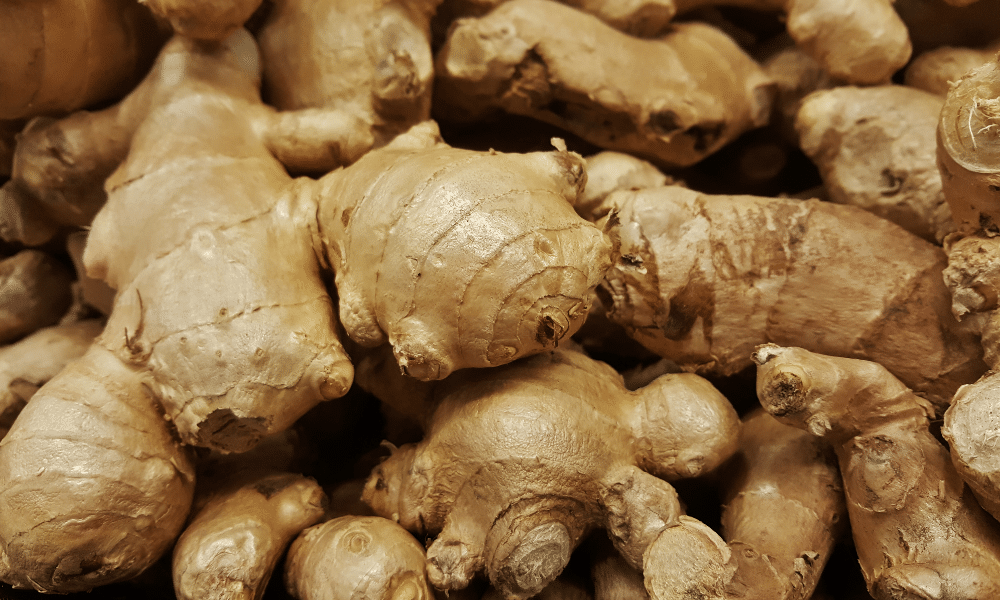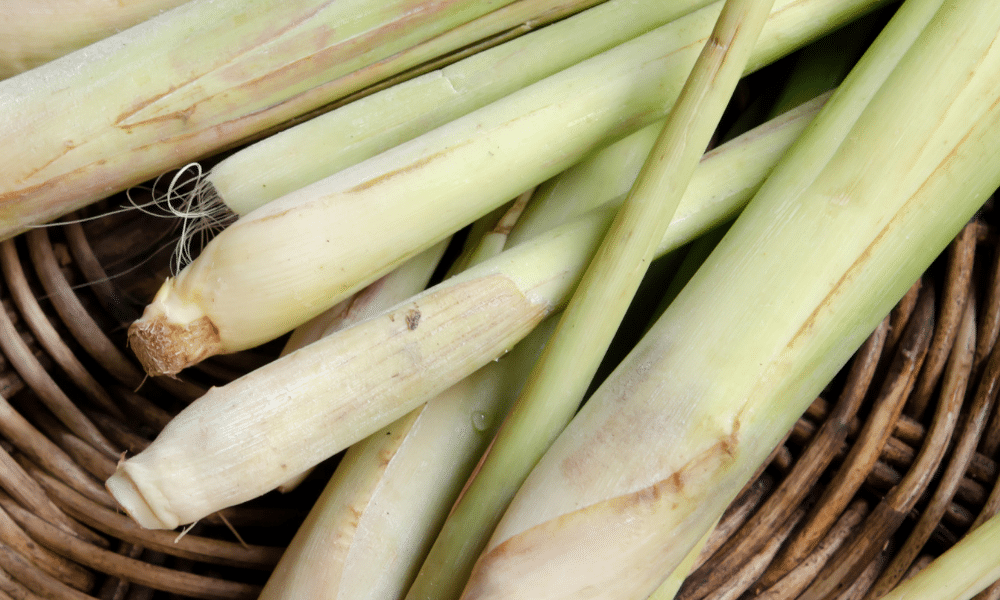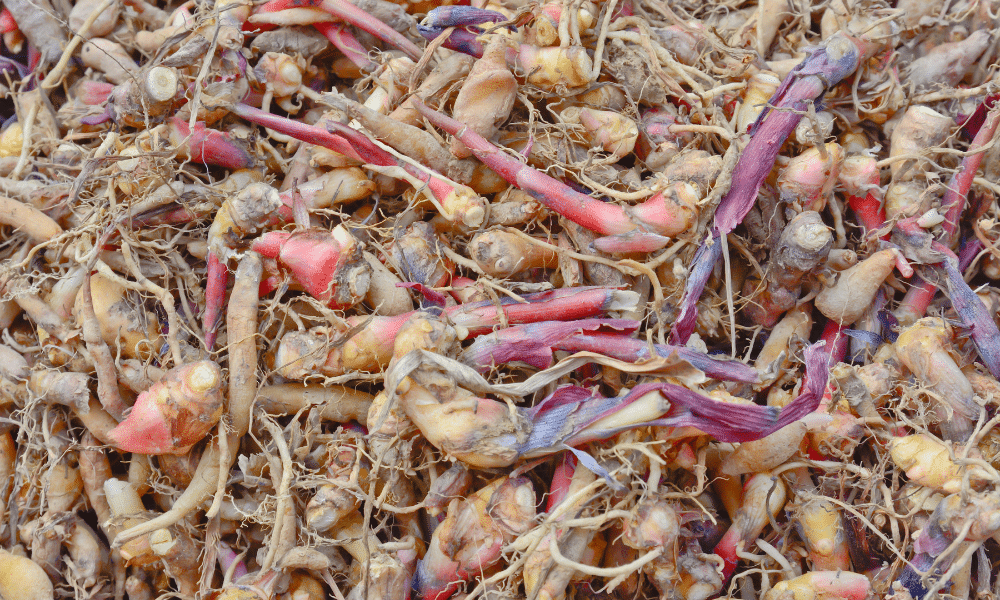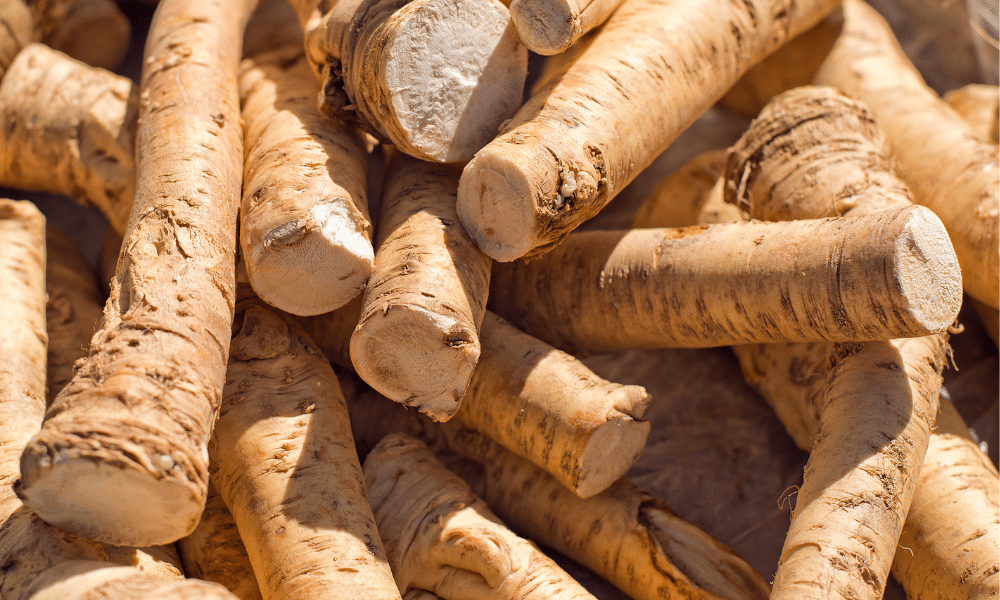Galangal is a tropical rhizomatous root spice commonly used in Asian recipes. Though it is more a staple in Thai cuisine.
There are four types of galangals, but none of them are often found in your everyday supermarket. Instead, you will have to find your local Asian speciality store to buy galangal.
But what can you use instead of galangal if you don’t have access to an Asian speciality store?
Our 5 Substitutes for Galangal
The robust, sharp flavours of galangal are often used to flavour curries and soups. Once cooked, it releases a citrusy aroma that leaves your food smelling wonderful.
Here are our top 5 substitutes that can replicate galangal’s flavour:
1) Ginger
Not only is ginger closely related to galangal but it also possesses many of the same qualities. But ginger is more common than galangal so will be easier to find at your local supermarket.
Ginger can be chopped, diced or grated, making it an easy substitute for any form of galangal. Once it has been prepared, it will release a sharp, robust flavour with a slight hint of mint.
As well as looking very similar to galangal, ginger also copies its stomach-soothing properties. Many people drink ginger tea or add ginger to their morning smoothies as a natural solution to nausea and cramps.
Adding ginger to your meals in place of galangal will also make you benefit from its healing properties.
However, ginger is significantly stronger than galangal. So, only use ¾ as much ginger as your recipe calls for. Otherwise, you will overpower your dish.
Add Lemon for a Citrus Note
The only galangal flavour that ginger doesn’t live up to is the slight hint of citrus. You only need to add a teaspoon of lime or lemon juice to make ginger taste exactly like galangal. Or, if you prefer, the zest of a lime and lemon will also work.

2) Lemongrass
If you have ever used lemongrass before, you will know how aromatic its citrusy smell can be. The smell alone only makes a dish that much more delicious.
Lemongrass, like galangal, is a prominent ingredient in Thai food. Unlike galangal, to release the signature lemongrass flavour, you have to simmer its stalks before use.
That is why it is often used in curries or soups as all you need to do is prep the lemongrass and throw it into the dish at the beginning of its cook time. This will leave plenty of time for the lemongrass to simmer and release its flavour into the soup or curry.
Don’t Waste Your Lemongrass Again
It is not just savoury recipes that lemongrass can be used in. It is also a popular base for citrusy teas and sweet drinks. The powered version is better for these uses.

3) Finger Root
Just like ginger, finger root is closely related to galangal with a sharp profile and matching pungency. Though finger root looks more like thin carrots complete with an orange tinge.
Finger root is also commonly used in many Thai curry recipes, so works best when substituted for galangal in a curry. But it can be used in other recipes too and be just as effective.
Try not to overuse finger root when substituting it for galangal. It can be a bit too punchy. To avoid this, only use ½ the amount listed in a recipe.
Use Finger Root to Neutralise Your Dish
The sharp flavour emitted by finger root makes it a great neutraliser when your dish is leaning towards too tart or powerful. Its neutralising effects work best with fish.

4) Cinnamon and Mace
Cinnamon and mace on their own will not provide the same complex flavours of galangal. But when combined, the taste is almost mistakable for galangal.
It is the cinnamon that brings the deep, warm taste while mace sweetens the deal with a mild citrus note. Together, you get that signature sweet and robust flavour.
More Is… More!
As popular spices are used in Thai cuisine, you may find that your recipe already includes cinnamon or mace. Be cautious of this when you use spices to substitute galangal.
You don’t want to overwhelm your dish or alter its flavour profile. Only add 1 teaspoon of the mixture at a time and continue to taste your throughout.
5) Horseradish
Though a milder flavour than galangal, horseradish has the same hot kick that galangal has. So long as you use horseradish root rather than the condiment.
Horseradish has a complex spicy flavour that is commonly associated with wasabi or mustard. But horseradish pairs better with the other ingredients commonly used in their curries or soup.
Be Prepared for the Smell
When horseradish root is chopped, it will release a very strong, often overwhelming smell. You will want to open a window before you start preparing it so that the smell of horseradish doesn’t stink up your whole house.

Other Substitutes for Galangal
If you do not have the above substitutions just laying around your house, here are some others that you will probably already have in your pantry:
- Black Pepper – It will not replicate the flavour of galangal, but it will give your dish that sharp kick if used in excess.
- Ground Ginger – No fresh ginger? Just use ground ginger. It gives the same flavours as normal ginger just way more diluted.
- Cinnamon and Ground Ginger – You won’t get that citrusy aroma of galangal, but cinnamon and ground ginger together will develop a complex galangal substitute.
Summary
It is the robust, sharp complexity of galangal that allows it to elevate many Thai dishes. But as an ingredient, it is difficult to find.
To replicate its unique flavour, ginger works as the best substitute. Though you will need a hint of lemon or lime to really match the flavours.
